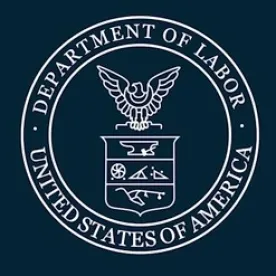In this episode of The Proskauer Brief, partners Harris Mufson and Allan Bloom discuss the U.S. Department of Labor’s proposed new rule on independent contractor classification. In recent years, the misclassification of workers as independent contractors has been the subject of a number of private lawsuits and investigations by government agencies. This is true for traditional industries and also companies within the gig economy, which rely heavily on independent contractors. So be sure to tune in as we address how this proposed rule may impact employers’ classification of workers.
Harris Mufson: Welcome to The Proskauer Brief: Hot Topics in Labor and Employment Law. I’m Harris Mufson and on today’s episode I’m joined by Allan Bloom and we’re going to discuss the Department of Labor’s proposed new rule on independent contractor’s classification. So Allan, Employment Law really divides workers into two categories: one employees and the others independent contractors, and the Department of Labor has proposed a new rule regarding the classification of workers as independent contractors. Can you describe that rule?
Allan Bloom: Harris that’s right. Employees are generally covered by the federal wage and hour laws so that means minimum wage that means overtime pay but independent contractors are not covered so whether a worker is an employee or an independent contractor is a major issue under the wage and hour laws in addition to a number of other laws. Particularly in the last few years the misclassification of workers as independent contractors has been the subject of a number of private lawsuits a number of investigations by government labor agencies and tax agencies and this is not only in traditional industries but also in businesses within the gig economy or the on-demand economy that rely heavily on independently contracted workers. So the legal rights of these types of workers has been the subject of a lot of debate in the last few years and has become increasingly political. Some states have taken steps to make it harder for businesses to classify workers as independent contractors.
A great example is California, which recently enacted what they called AB5 Assembly Bill Five legislation under which many workers are deemed to be employees for purposes of California’s wage and hour laws unless the services they provide are outside the usual course of the business of the company that engages them. Now you have the U.S. Department of Labor the federal agency publishing a proposed rule today September 25th to clarify whether a worker is or isn’t an independent contractor for purposes of the Fair Labor Standards Act: the federal law governing wages and hours.
Harris Mufson: So why don’t we talk a little bit about the specifics of the proposed rule can you outline the highlights of that for our listeners?
Allan Bloom: Harris, the rules start out by confirming that independent contractors are not employees for purposes of the federal wage law. That means that under the Fair Labor Standards Act a business does not have to pay minimum wage or overtime to an independent contractor. So what makes somebody an independent contractor? The determining factor for the Department of Labor is economic dependence and according to the agency a worker is an employee under the federal wage laws if as a matter of economic reality that worker is dependent on the business that engages him or her. On the other hand, a worker is an independent contractor if he or she as a matter of economic reality is in business for himself or herself. How will the Department of Labor determine whether or not a worker is economically dependent on a business? There are two core factors and three other factors. The two core factors are the most important ones and they’re the ones that are going to be afforded the greater weight in the analysis. If both of them point to the same classification, whether its employee or independent contractor, then there’s going to be a substantial likelihood that’s the right answer regardless of how the three other factors play out. So the first core factor is the nature and degree of the individual’s control over the work.
Under this factor a worker is going to be viewed as an independent contractor if the worker exercises substantial control over key aspects of the performance of the work like setting their own schedule, selecting the projects they want to work on, being able to work for other clients, that’s the individual controlling the work. On the other hand if the business exercises substantial control over the performance of the work such as by controlling the worker’s schedule by prohibiting the worker from working for other companies or clients. That’s the kind of thing that’s going to point to the worker being an employee. The second core factor is the individual’s opportunity for profit or loss.
Under this factor a worker is going to be likely more viewed as an independent contractor if he or she has the ability to earn profit or incur losses based on their exercise of initiative like managerial skills or business acumen or judgment or based on their investment or capital expenditure on material or equipment or helpers. Those kinds of investments in that kind of exercise of initiative and managerial skills is going to point towards an independent contractor. On the other hand, if the only way a worker can increase his or her earnings is by working more hours or working more efficiently, that would suggest the worker is an employee. So those are the two core factors control over the work by the individual and the individual’s opportunity for profit and loss.
The other three factors are as follows: number one, the amount of skill required for the work. Does the work require specialized training or specialized skill that the business does not have or its employees do not have? If so, that would suggest the worker is an independent contractor. If on the other hand the worker has the same skills as the company’s employees it’s just supplementing the workforce, as it were. That would suggest the worker is an employee and not a contractor. The next factor is the degree of permanence of the working relationship. So if you have a working relationship that is definite in duration or sporadic, short-term well-defined, that would weigh in favor of the worker being an independent contractor. On the other hand if the work is by design indefinite in duration or ongoing or continuous that would suggest the worker is an employee and it makes sense. You would bring in a contractor to work on a defined project or a defined set of services, where an employee might be an employee going forward until such time as that employment relationship ends. And the last factor is whether the work is part of an integrated unit of production. Is it part of the business’s production process for a good or a service? If so that would suggest employment. If on the other hand the work is segregable from the business’ production process that would suggest an independent contractor relationship.
And the Department of Labor points out that this factor is different from one that merely looks at whether the worker’s services are important to or integral to or central to the business. And in that way it differs from a number of state law tests on these issues because a number of state law tests will look at whether the services are integral to the business. The DOL’s test is a little bit different it’s whether the work is part of an integrated unit of production.
Harris Mufson: So Allan in terms of the factors that the DOL has laid out, what is the practical implication of those for companies that utilize independent contractor services and anticipate doing so in the future?
Allan Bloom: Harris, it really depends on where the company is because you have not only federal law but state or local law and if state or local law comes out differently and would suggest that someone’s an employee that’s going to govern. These DOL factors may end up governing if there is no state law or local law that’s different, but there is in a number of states so businesses would have to take into consideration those state and local laws.
Harris Mufson: Okay and then this is a proposed rule and so what is the timeline that this proposed rule would actually be adopted formally by the Department of Labor?
Allan Bloom: Public comments on the rule are due on October 26th. After that date the DOL will review the comments and at some point publish a final rule and at that point it would become effective either when it’s published or a number of days after that. Don’t expect it to happen before the election.
Harris Mufson: It’s something we’ll certainly continue to monitor and publish on our blog and also continue to do some podcasts about this independent contractor issue. So thank you very much Allan, and thank you to all of our listeners for joining us on The Proskauer Brief today. Stay tuned for more insights on the latest Hot Topics in Labor and Employment Law and be sure to follow us on Apple Podcasts, Spotify and Google Play.




 />i
/>i

